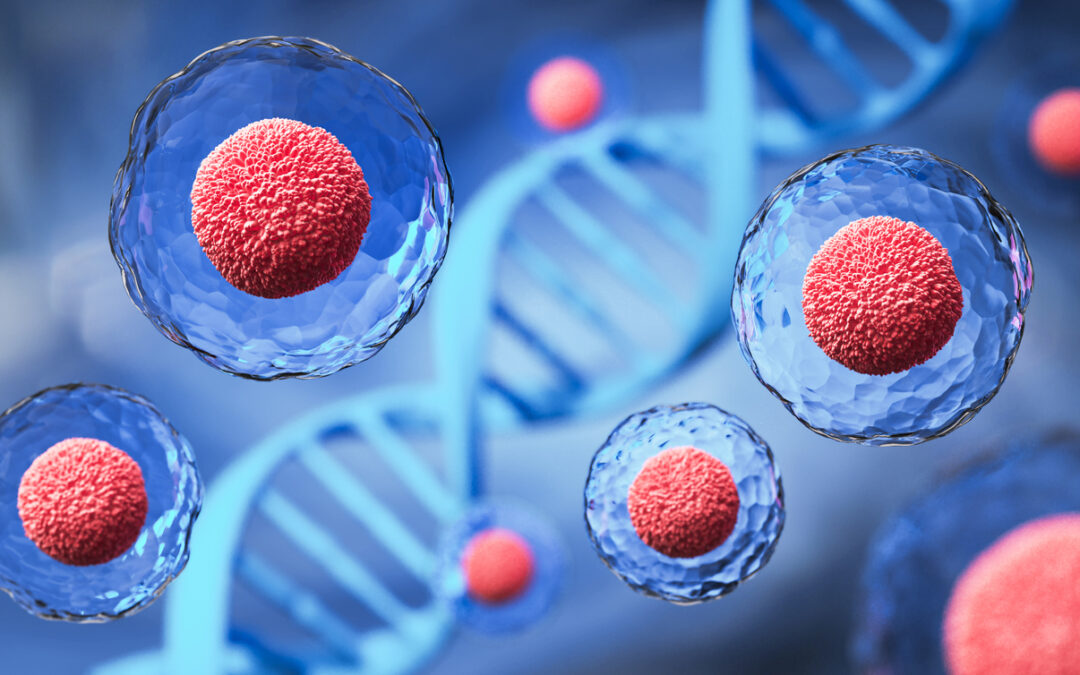Exosome Therapy vs Stem Cell Therapy: Understanding the Difference

As a functional medicine practitioner deeply invested in the latest advancements in regenerative medicine, I frequently encounter questions regarding the innovative therapies at the forefront of patient care—particularly exosome therapy and stem cell therapy.
These therapies represent two of the most promising avenues for cellular regeneration, each with its unique mechanism and potential health benefits. This article aims to delineate the critical differences between exosome therapy and stem cell therapy, offering a professional perspective on their respective mechanisms of action, clinical applications, and the regulatory considerations that shape their use in practice. With a deeper understanding of these sophisticated therapies, both patients and fellow healthcare providers can better navigate the complexities of choosing the most appropriate and effective treatment options for various medical conditions.
Nature of Treatment
- Stem Cell Therapy: Involves using stem cells, which are undifferentiated cells capable of transforming into various types of cells needed by the body. These cells can divide and replace damaged tissues, potentially restoring function lost due to disease or injury.
- Exosome Therapy: Utilizes exosomes, which are small extracellular vesicles derived from cells, including stem cells. Exosomes do not turn into different cell types but instead serve as messengers, carrying proteins, lipids, and RNA from one cell to another, influencing or modifying the activity of recipient cells.
Mechanism of Action
- Stem Cell Therapy: The primary mechanism is the potential of stem cells to differentiate into the required cell types to repair or replace damaged tissues. Stem cells can also release factors that help modulate the immune system and promote healing.
- Exosome Therapy: Exosomes work primarily through the signals they carry, which can modulate inflammation, facilitate tissue repair, and promote cellular communication. They do not replace cells but influence healing and regeneration processes.
Therapeutic Applications
- Stem Cell Therapy: Used in conditions like orthopedic injuries, cardiovascular diseases, and neurological disorders. It’s also explored in clinical trials for its potential in treating autoimmune diseases, diabetes, and other chronic conditions.
- Exosome Therapy: Being researched for its potential in areas similar to stem cell therapy, such as in regenerative medicine, wound healing, and anti-inflammatory treatments. Exosomes are also being studied for their role in treating skin aging and possibly as vectors for drug delivery.
Regulatory and Safety Considerations
- Stem Cell Therapy: Faces significant regulatory scrutiny, particularly concerning the sources of stem cells (e.g., embryonic stem cells), methods of preparation, and ethical considerations. There are also concerns about the potential for stem cells to form tumors.
- Exosome Therapy: Generally considered to have a lower risk profile since exosomes do not replicate and cannot form tumors. However, as a relatively new field, the long-term effects and optimal dosing strategies are still under research, and regulatory guidelines are evolving.
Production and Administration
- Stem Cell Therapy: Requires cultivating stem cells, which can be complex and costly. The cells must be harvested, often from the patient (autologous) or a donor (allogeneic), cultured, and then administered back into the patient.
- Exosome Therapy: Involves isolating exosomes from cell cultures, which can be from various sources, including stem cells. This might be seen as less invasive since it doesn’t always require cells to be harvested from the patient.
As we continue to explore the frontiers of regenerative medicine, understanding the nuances and potential applications of both exosome therapy and stem cell therapy becomes increasingly important. While this article has provided an overview of their distinctive mechanisms and therapeutic potentials, the rapidly evolving nature of these treatments means there is much more to learn and discuss.
If you have questions about how these innovative therapies relate to specific health conditions, or to learn which of these techniques we offer, I encourage you to reach out. Engaging with a knowledgeable healthcare provider can help you navigate the complexities of these exciting medical advances.
Bibliography
- Lener, T., Gimona, M., Aigner, L., Börger, V., Buzas, E., Camussi, G., … & Giebel, B. (2015). Applying extracellular vesicles based therapeutics in clinical trials – an ISEV position paper. Journal of Extracellular Vesicles, 4(1), 30087. doi:10.3402/jev.v4.30087.
- Trounson, A., & McDonald, C. (2015). Stem Cell Therapies in Clinical Trials: Progress and Challenges. Cell Stem Cell, 17(1), 11-22. doi:10.1016/j.stem.2015.06.007.
- Phinney, D. G., & Pittenger, M. F. (2017). Concise Review: MSC-Derived Exosomes for Cell-Free Therapy. Stem Cells, 35(4), 851-858. doi:10.1002/stem.2575.
- Kalluri, R., & LeBleu, V. S. (2020). The biology, function, and biomedical applications of exosomes. Science, 367(6478), eaau6977. doi:10.1126/science.aau6977.
- Mendicino, M., Bailey, A. M., Wonnacott, K., Puri, R. K., & Bauer, S. R. (2014). MSC-based product characterization for clinical trials: an FDA perspective. Cell Stem Cell, 14(2), 141-145. doi:10.1016/j.stem.2014.01.013.
- György, B., Szabó, T. G., Pásztói, M., Pál, Z., Misják, P., Aradi, B., … & Buzás, E. I. (2011). Membrane vesicles, current state-of-the-art: emerging role of extracellular vesicles. Cellular and Molecular Life Sciences, 68(16), 2667-2688. doi:10.1007/s00018-011-0689-3.
- Caplan, A. I. (2017). Mesenchymal Stem Cells: Time to Change the Name! Stem Cells Translational Medicine, 6(6), 1445-1451. doi:10.1002/sctm.17-0051.

